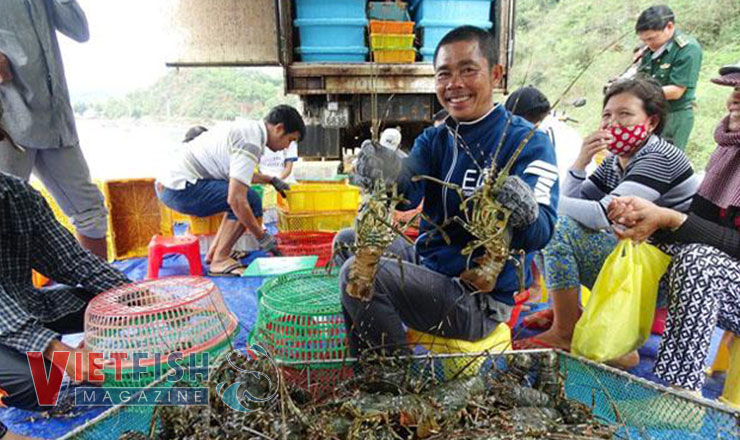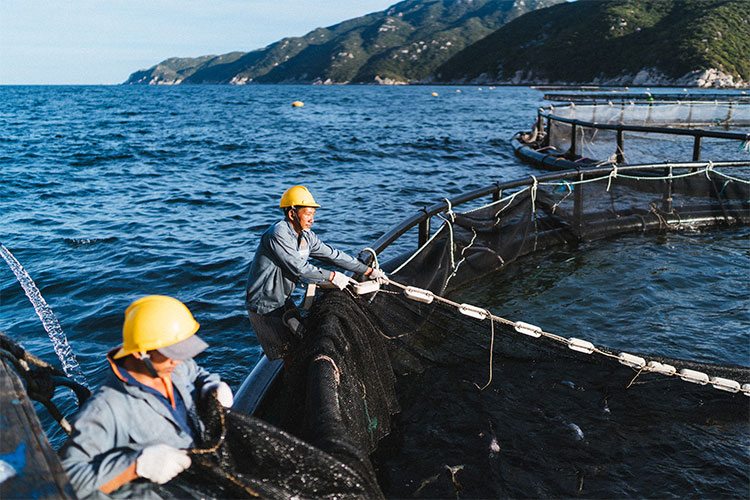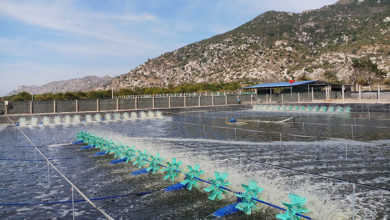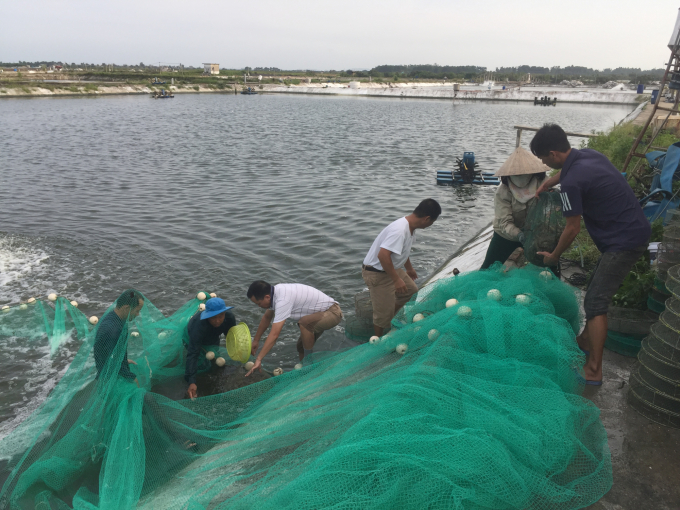Developing branding for Vietnam’s marine aquaculture: stories from Norway
Interview to Charge d’affaires a.i., Norwegian Embassy in Hanoi, Mette Møglestue
With its well-developed marine aquaculture, Norway is currently the world’s second largest seafood exporter. Norway is also an ideal model that Vietnam would want to learn from to unleash the national potential for marine aquaculture.
VFM: Madam CDA, please allow me to discuss with you some issues related to Norway’s stories of marine aquaculture, which can be useful to Vietnam. In the latest meeting with the Vietnam’s Department of Fisheries, you said that it took Norway years to develop Norway’s marine aquaculture into the current success. Can you share more about this?
MM: As an ocean nation, 70% of Norway’s export earnings come from ocean-based activities, thus, the Norwegian Government gives high priority to ocean-based economy, and we have become one of the world’s leading fisheries nations.
This success can be attributed to several factors, including an effective management system that involves collaboration of all stakeholders, promotion of innovation including research and development, and application of advanced technologies and sustainable practices throughout the industry.
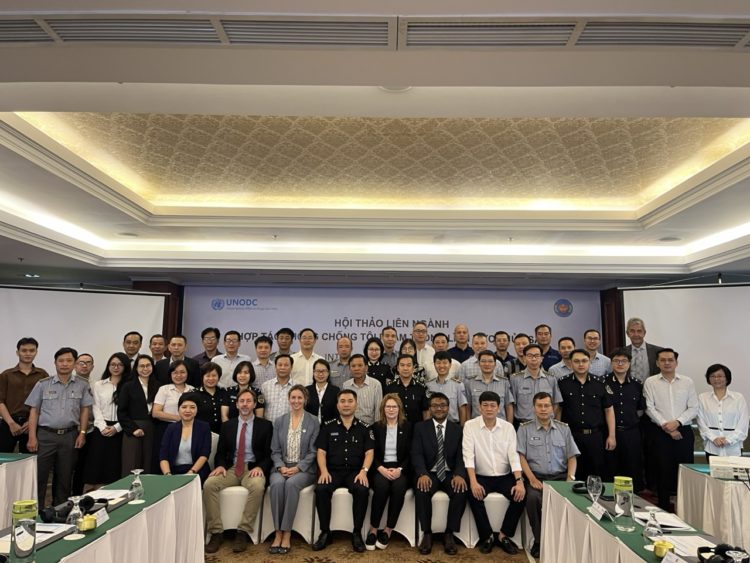
For example, we apply strict regulations on fish farming operations to minimize environmental impact, reduce the use of antibiotics, and pay more attention to the health and welfare of farmed fish. Specifically, salmon farms must be located in the open sea, far enough away from maritime traffic areas. The fish must have ample space to swim and grow in a clean environment. We guarantee at least 97.5% water to every 2.5% salmon. Regular oxygen saturation, temperature, and salinity checks are conducted to ensure excellent water quality. The pens are also engineered to provide the salmon with the best possible protection against potential attacks from other aquatic creatures. Additionally, farms must have contingency systems to secure the basic needs of salmon in case of system malfunctions. All our fish are treated with the utmost care. Not only is it the right thing to do, but stress also actually affects the taste of the fish.
Once approved, the production site must agree to being strictly and regularly monitored. Between each farming cycle, farms are left to rest to preserve the natural environment. During this period, the seabed is closely monitored. We restrict the number of farms to fewer than 750 per 28,953 km of coastline and licences are allocated sparingly to avoid excessive development.
VFM: Vietnam has a large area of seas and great potential for marine farming. Currently, Vietnam is promoting its marine farming program to make the most of its ocean advantages and reduce pressure on the exploitation sector. In your opinion, what can Vietnam learn from Norway’s experience?
MM: We congratulate Vietnam on its recent adoption of the first Marine Spatial Planning (MSP) on 28 June 2024. A good MSP lays an essential foundation to ensure co-existence and sustainable development of all marine industries. It all starts from an enabling regulatory framework.
The Norwegian Government has also recently adopted a Business Plan for Norwegian sea areas, aiming at ensuring a better coexistence of various industries in Norway’s sea areas.
Norway and Vietnam are both ocean nations. We acknowledge the important role of the sea in our economies, thus the need to protect its resources for our future generations. The sea provides food and energy, regulates the climate, creates jobs for the entire coastal communities, and binds us together with the rest of the world.
It is therefore crucial to ensure the development of the existing and the “new” marine industries, including marine aquaculture and offshore wind, within a sustainable framework, and at the same to take care of life in the sea, making arrangements for the marine industries to contribute effectively to cutting greenhouse gas emissions. More than ever, the sea must be used in a way that ensures a good environmental condition and a rich natural diversity in the sea today and in the future.
In addition, we also invest in R&D for advancing modern and sustainable aquaculture technologies, improving production efficiency, and addressing industry challenges. Another crucial factor includes a close collaboration and knowledge sharing among industry stakeholders, including producers, researchers, government agencies, and NGOs.
VFM: In addition to the development of marine farming in different localities, Vietnam also aims to promote exports of marine products. What conditions, in your opinion, that Vietnam would need to achieve this goal?
MM: Norway’s aquaculture is the country’s second largest export industry. Our aquaculture industry has become a highly productive, specialized and professionalized industry, employing more than 8,000 people in coastal communities.
Norwegian salmon is well known all over the world and people often associate it with a renowned source known for its exceptional quality and high nutritional value including protein, vitamins A, D, B12, and healthy omega-3 fatty acids. However, behind this delectable experience lies an intricate sustainable cultivation process incorporating the most advanced and sophisticated technological systems.
Shrimp, pangasius and tuna have been Vietnam’s key seafood exports. Based on the Norwegian experience it is important to increase the value and quality of exports based on sustainability. I would like to emphasis that increasing the value of seafood has proven to be more important for export than the volume.
A strong national branding is also important. The Norwegian Seafood Council has been developing “Seafood from Norway” as a national branding for all seafood from Norway. This is a symbol of reputable quality, clear origin, and official imports from Norway, ensuring sustainability from output, fishing process, farming methods, and fish food.
VFM: What can you share about Norway-Vietnam future cooperation programme in marine farming, Madam CDA?
MM: Norway and Vietnam have been cooperation in the fisheries sector for several decades and Norway is looking forward to continue to do so. We are now implementing the Letter of Intent of Cooperation signed between the Ministry of Agriculture and Rural Development of Vietnam and the Ministry of Trade, Industry and Fisheries of Norway in 2021 on strengthening and developing cooperation in marine aquaculture industry.
With Vietnam’s MSP already adopted, Norway will assist the Government of Vietnam, its Ministry of Agriculture and Rural Development of Vietnam (MARD), and relevant ministries and agencies in the implementation.
I am excited to see how we can share experience and information as we are implementing the new Business Plan for Norwegian sea areas. A multi-stakeholder approach has been mentioned as a key factor in the success story of Norway’s aquaculture industry, including the private sector and we are looking forward to continued exchanges with Vietnam.
Vietnam Fisheries International Exhibition (Vietfish) will take place this August. We are looking forward for Norwegian companies to attend and I am sure they will have a lot to share and offer to Vietnam potential partners.
Thank you very much.


